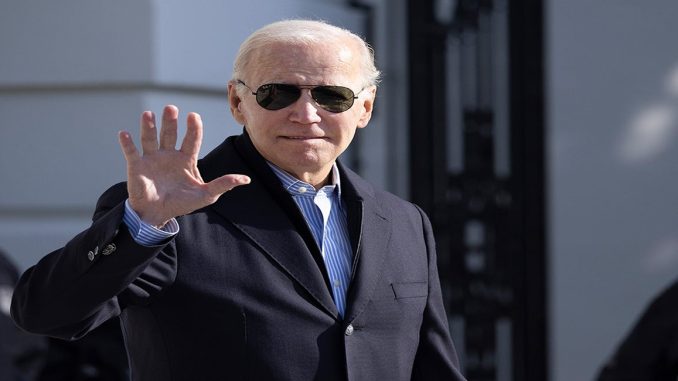
The sailor’s lament “Water, water everywhere, and not a drop to drink” is reminiscent of how most Americans must feel today about their cost of living.
For instance, there are plenty of homes and apartments across the country, but good luck finding one that’s affordable—inflation and interest rate hikes under President Joe Biden have made that all but impossible.
Those two factors have made the average worker in America $4,200 poorer on an annual basis.
White House officials are quick to cite the recent rapid increase in nominal wages, but they somehow always leave out the fact that prices have risen even faster than wages, so that the average American’s larger paycheck actually buys less than it did before. The decline in real (adjusted for inflation) wages amounts to $3,000 per year.
In other words, the average worker in America has the equivalent of $3,000 less annually than he or she did in January 2021, when Biden became president.
That decreased purchasing power represents the amount of money the federal government has confiscated through the hidden tax of inflation. Americans are demonstrably poorer because of it, and the government is using it to pay for trillions of dollars in deficits.
At one point, this inflation was totally ignored by Washington. The Biden administration and the Federal Reserve each insisted inflation was “transitory,” while they focused on issues such as diversity. But now, the reality is so apparent that not even the ruling class in the nation’s capital can ignore it. In a belated attempt to fight inflation, the Fed has been pushing up interest rates.
Although that will help reduce inflation over time, it has increased borrowing costs very quickly for Americans. As financing becomes more expensive, interest rates on mortgages, auto loans, and credit cards are rising.
To add insult to injury, this further increases the cost of living for many Americans on top of the existing pain from inflation. The average worker is paying about $1,200 a year more in financing costs than when Biden took office. Once again, ordinary Americans are demonstrably poorer.
But it is important to remember that these numbers are just averages, and there must always be people above and below the average. Many Americans are faring even worse under Biden.
The financial pain has become truly debilitating for those buying a home or those with mounting credit card debt, as well as those who have not received a pay increase while prices have climbed 12.7%.
The housing market provides a perfect example of how stretched American families are today, compared to about a year and a half ago.
When Biden took office, the average interest rate on a 30-year fixed-rate mortgage was 2.77% and the median sales price for a home was $306,000. With a 20% down payment, the monthly mortgage payment on that home was $1,002.
What a difference 20 months makes. Today, the median sales price on a home has jumped to $372,000 and the interest rate has more than doubled to 6.29%.
Those two factors both push up the monthly payment, which has exploded. Assuming the buyer can still manage to scrape together the same percent down on the mortgage, even though that down payment now must be 22% bigger than before, the monthly payment has skyrocketed to $1,840.
That is an 84% increase in about a year and a half and an increase of $10,056 per year. Remember, the house is not bigger, it is not newer, and it is not in a nicer location—it is exactly the same, but it costs substantially more.
It is no wonder that home affordability already has plummeted 32% and likely will go lower as interest rates continue marching upward. If the fiscal and regulatory policy would take its boot off the neck of the productive private economy, the Fed wouldn’t need to raise rates so aggressively. That seems unlikely, however.
For an entire generation of Americans, the current destructive inflationary cycle is brand-new, last occurring 40 years ago. In brief, the government spends, borrows, and prints too much money, causing inflation. The Fed reins in inflation, but at the expense of higher interest rates.
Although new to many Americans, this pattern is not new to history and is a predictable formula.
Nevertheless, we are relearning the lesson, and the tuition at this school is steep.
Originally published by The Washington Times
Have an opinion about this article? To sound off, please email letters@DailySignal.com and we’ll consider publishing your edited remarks in our regular “We Hear You” feature. Remember to include the URL or headline of the article plus your name and town and/or state.

